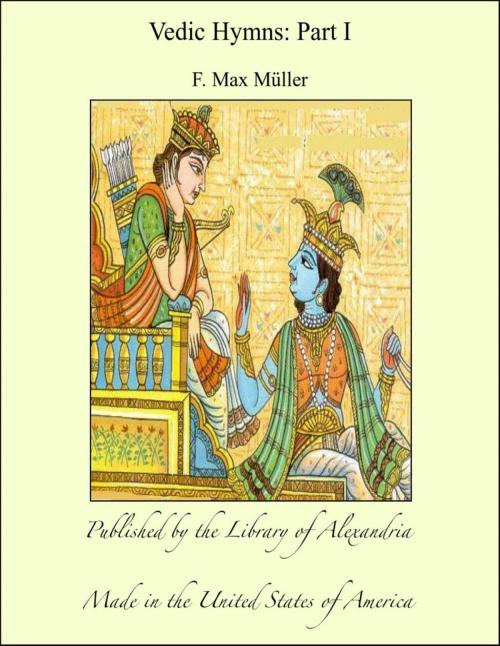| Author: | F. Max Müller | ISBN: | 9781465579010 |
| Publisher: | Library of Alexandria | Publication: | March 8, 2015 |
| Imprint: | Language: | English |
| Author: | F. Max Müller |
| ISBN: | 9781465579010 |
| Publisher: | Library of Alexandria |
| Publication: | March 8, 2015 |
| Imprint: | |
| Language: | English |
I finished the Preface to the first volume of my translation of the Hymns to the Maruts with the following words: 'The second volume, which I am now preparing for Press, will contain the remaining hymns addressed to the Maruts. The notes will necessarily have to be reduced to smaller dimensions, but they must always constitute the more important part in a translation or, more truly, in a deciphering of Vedic hymns.' This was written more than twenty years ago, but though since that time Vedic scholarship has advanced with giant steps, I still hold exactly the same opinion which I held then with regard to the principles that ought to be followed by the first translators of the Veda. I hold that they ought to be decipherers, and that they are bound to justify every word of their translation in exactly the same manner in which the decipherers of hieroglyphic or cuneiform inscriptions justify every step they take. I therefore called my translation the first traduction raisonnée. I took as an example which I tried to follow, though well aware of my inability to reach its excellence, the Commentaire sur le Yasna by my friend and teacher, Eugène Burnouf. Burnouf considered a commentary of 940 pages quarto as by no means excessive for a thorough interpretation of the firs; chapter of the Zoroastrian Veda, and only those unacquainted with the real difficulties of the Rig-veda would venture to say that its ancient words and thoughts required a less painstaking elucidation than those of the Avesta. In spite of all that has been said and written to the contrary, and with every wish to learn from those who think that the difficulties of a translation of Vedic hymns have been unduly exaggerated by me, I cannot in the least modify what I said twenty, or rather forty years ago, that a mere translation of the Veda, however accurate, intelligible, poetical, and even beautiful, is of absolutely no value for the advancement of Vedic scholarship, unless it is followed by pièces justificatives, that is, unless the translator gives his reasons why he has translated every word about which there can be any doubt, in his own way, and not in any other.
I finished the Preface to the first volume of my translation of the Hymns to the Maruts with the following words: 'The second volume, which I am now preparing for Press, will contain the remaining hymns addressed to the Maruts. The notes will necessarily have to be reduced to smaller dimensions, but they must always constitute the more important part in a translation or, more truly, in a deciphering of Vedic hymns.' This was written more than twenty years ago, but though since that time Vedic scholarship has advanced with giant steps, I still hold exactly the same opinion which I held then with regard to the principles that ought to be followed by the first translators of the Veda. I hold that they ought to be decipherers, and that they are bound to justify every word of their translation in exactly the same manner in which the decipherers of hieroglyphic or cuneiform inscriptions justify every step they take. I therefore called my translation the first traduction raisonnée. I took as an example which I tried to follow, though well aware of my inability to reach its excellence, the Commentaire sur le Yasna by my friend and teacher, Eugène Burnouf. Burnouf considered a commentary of 940 pages quarto as by no means excessive for a thorough interpretation of the firs; chapter of the Zoroastrian Veda, and only those unacquainted with the real difficulties of the Rig-veda would venture to say that its ancient words and thoughts required a less painstaking elucidation than those of the Avesta. In spite of all that has been said and written to the contrary, and with every wish to learn from those who think that the difficulties of a translation of Vedic hymns have been unduly exaggerated by me, I cannot in the least modify what I said twenty, or rather forty years ago, that a mere translation of the Veda, however accurate, intelligible, poetical, and even beautiful, is of absolutely no value for the advancement of Vedic scholarship, unless it is followed by pièces justificatives, that is, unless the translator gives his reasons why he has translated every word about which there can be any doubt, in his own way, and not in any other.















